
Starting June 1st, 2023 Our warehouse fee will be $0.65/cubic foot per month
In effort to lower the warehouse storage fee during inflation, we have went narrow aisle racking.This construction took us four months but the project is finally completed. With narrow aisle racking, we are able to drop storage by 24%.We as partners will go through this inflation together.
04/16/2024
In today's fast-paced and globalized world, businesses are constantly looking for ways to streamline their processes and increase efficiency. One of the key areas that have seen significant improvements is shipping. With the introduction of Electronic Data Interchange (EDI) in shipping, the industry has been revolutionized, making it easier to exchange information and manage supply chains.
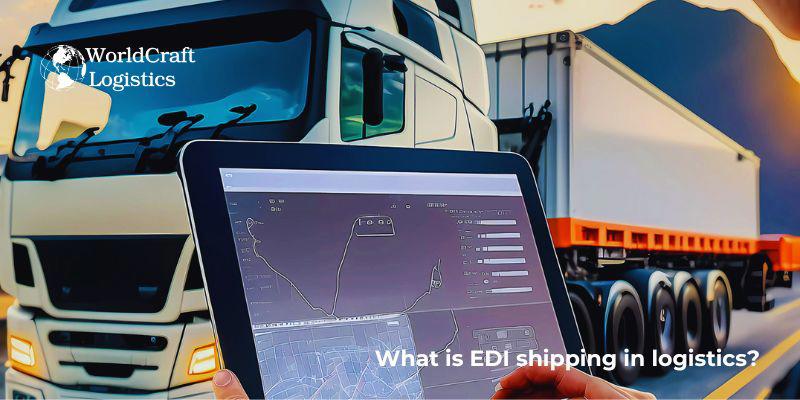
So, what exactly does EDI shipping mean? To put it simply, EDI is the electronic exchange of business documents between trading partners. In the context of shipping, this means the transfer of information related to orders, invoices, and other important documents in a standardized format, eliminating the need for paper-based communication. This digital exchange of data has greatly improved communication and collaboration among shipping partners, resulting in faster and more accurate transactions.
Learn more useful terms for the shipping industry to boost your business:
👉 The best guide to Overnight Shipping & everything you need to know
👉 Flat Rate Shipping: Definition, Costs and Optimization Guide
👉 What is blind shipping? Benefits and best practices for businesses
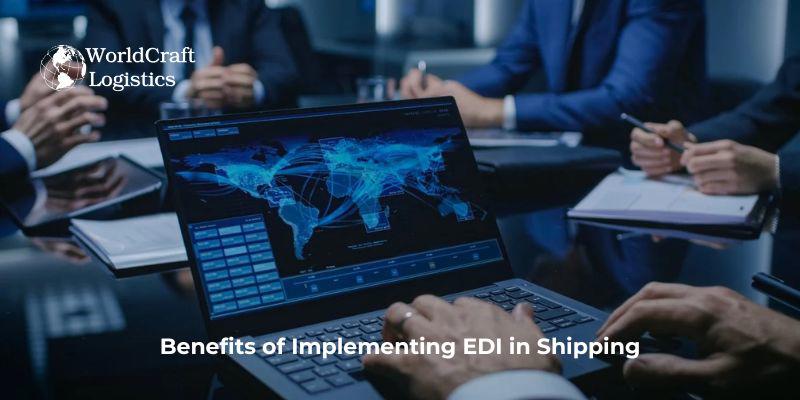
Implementing EDI in shipping has numerous benefits for both shippers and carriers. Some of the most significant advantages include:
The traditional process of shipping involves a lot of manual paperwork, which is not only time-consuming but also prone to errors. With EDI, all the necessary information is seamlessly transmitted between partners, automating the entire process. This eliminates the need for human intervention, reducing the chances of errors and delays. As a result, shipments can be processed and delivered at a much faster rate, leading to increased efficiency and customer satisfaction.
The use of EDI in shipping significantly reduces the amount of paperwork involved, which translates to cost savings for businesses. The manual processing of paper documents is not only time-consuming but also involves expenses such as printing, postage, and storage. With EDI, these costs are eliminated, allowing businesses to save money and allocate resources to other areas of their operations.
Manual data entry is prone to human error, which can lead to costly mistakes in shipping. With EDI, data is transmitted electronically, reducing the chances of errors and ensuring accuracy. This not only improves the quality of data but also allows for seamless integration with other systems, such as inventory management and accounting.
EDI allows for real-time tracking and visibility of shipments, providing businesses with up-to-date information on the status of their orders. This enables them to proactively address any potential delays or issues, ensuring timely delivery of goods and improving customer satisfaction.
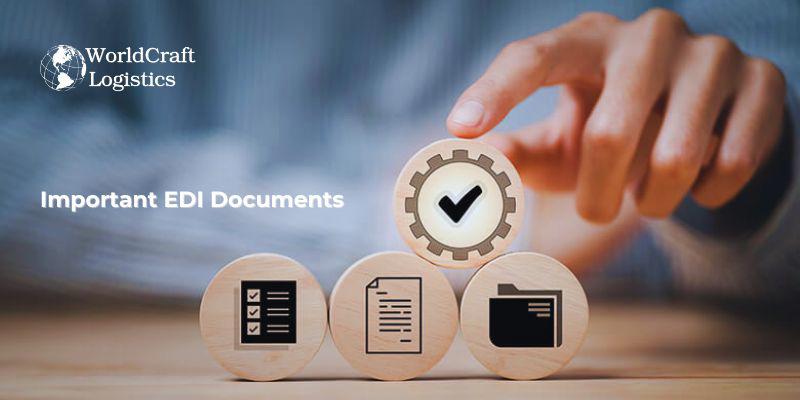
In EDI shipping, there are several important documents that are exchanged between trading partners. These include:
A purchase order is a document sent by a buyer to a supplier, requesting the purchase of goods or services. In EDI, this document is standardized and contains relevant information such as item descriptions, quantities, prices, and delivery dates.
An ASN is a document sent by the supplier to the buyer, providing details about the shipment of goods. It includes information such as the contents of the shipment, carrier information, and expected delivery date and time. This document is crucial for tracking and monitoring the progress of shipments.
An electronic invoice is a digital version of a traditional paper invoice. It is sent from the supplier to the buyer and includes details such as the type and quantity of products shipped, prices, and payment terms. With EDI, these invoices can be processed and paid more quickly, improving cash flow for businesses.
A PRA is a document sent by the buyer to the supplier, notifying them of payment for an invoice. It contains details such as the invoice number, payment amount, and date of payment. With EDI, this process is automated, eliminating the need for manual reconciliation and reducing the risk of errors.
The traditional method of shipping involves a lot of manual processes, from filling out paper documents to physically delivering them to their intended recipients. This method is not only time-consuming but also prone to errors and delays. On the other hand, EDI shipping streamlines the entire process by digitally transmitting information in a standardized format. Let's take a closer look at how EDI compares to traditional shipping methods.
1. Paper-based Process | The traditional method of shipping relies heavily on paper-based processes, which are slow, inefficient, and error-prone. The preparation and processing of paper documents can take days, if not weeks, resulting in delayed shipments. Additionally, these documents need to be physically delivered, increasing the risk of loss or damage along the way. With EDI, all the necessary information is transmitted electronically, eliminating the need for paper-based communication. This significantly reduces the time and effort involved in processing documents, allowing for faster and more accurate transactions. |
2. Manual Data Entry | In traditional shipping, data entry is done manually, which is not only labor-intensive but also increases the chances of errors. These errors can lead to delays and costly mistakes. With EDI, data is entered and transmitted electronically, reducing the risk of errors. This not only improves the accuracy of data but also allows for seamless integration with other systems, such as inventory management and accounting. |
3. Lack of Real-Time Tracking and Visibility | In traditional shipping, tracking and visibility of shipments is limited, making it difficult for businesses to proactively address any potential issues. With EDI, real-time tracking and visibility are possible, providing businesses with up-to-date information on the status of their orders. This enables them to make informed decisions and take necessary actions to ensure timely delivery of goods. |
4. Communication and Collaboration | The traditional method of shipping relies heavily on manual communication and collaboration between trading partners. This can lead to miscommunication, delays, and errors. With EDI, all communication and collaboration are done electronically, eliminating the chances of miscommunication and improving efficiency. |
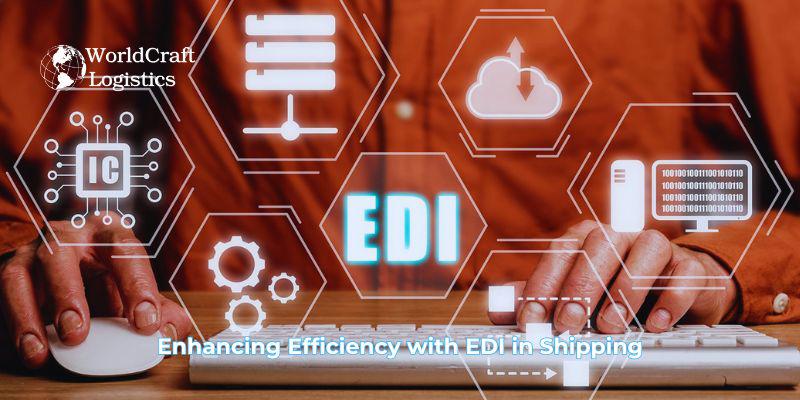
As discussed earlier, EDI has numerous benefits for businesses, including increased efficiency. Let's take a closer look at how EDI can enhance efficiency in shipping.
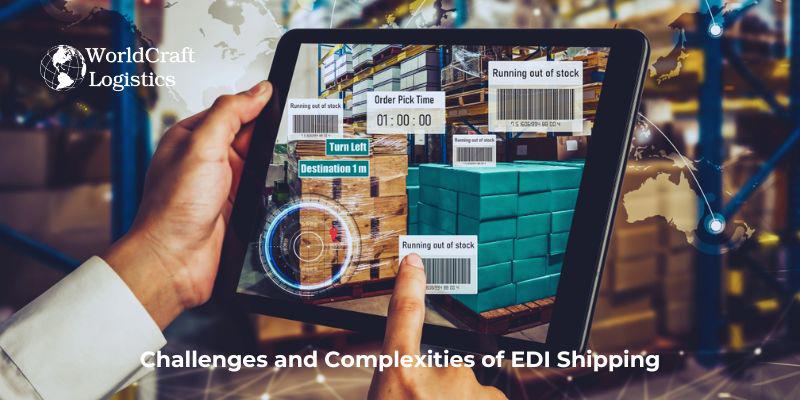
While EDI has numerous benefits for businesses, there are also some challenges and complexities that come with implementing it in shipping. These include:
Implementing EDI in shipping requires an initial investment in software, hardware, and training. This can be a significant barrier for small businesses or those with limited resources. However, the long-term benefits of EDI often outweigh the initial investment.
In order for EDI to work effectively, all trading partners must have compatible systems and technology. This can be a challenge for businesses that work with multiple partners, each using different systems. However, this can be addressed through standardization and system integration.
EDI is a complex system that requires specialized knowledge and expertise to set up and maintain. Businesses need to invest in training and hiring experts to manage their EDI processes, which can be costly.
As with any electronic exchange of data, there are security concerns with EDI. Businesses must ensure that their systems are secure and protected from cyber threats. This can be a challenge for smaller businesses with limited resources.
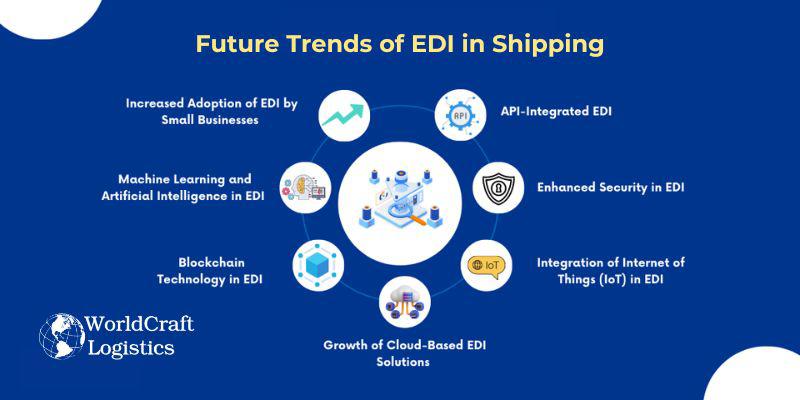
The future looks bright for EDI in shipping, as technological advancements continue to shape the industry. Some potential trends to look out for include. With the rise of cloud computing, more businesses are adopting cloud-based EDI solutions, eliminating the need for on-premise hardware and software. This shift makes EDI more accessible and affordable for smaller businesses.
Furthermore, integrating EDI with technologies such as the Internet of Things (IoT) and blockchain holds promise for enhancing shipping efficiency. IoT enables real-time shipment data monitoring, while blockchain ensures heightened security and traceability.
The incorporation of Artificial Intelligence (AI) into EDI stands to revolutionize data analysis and decision-making processes. AI-powered systems are capable of processing vast amounts of data, offering valuable insights and predictions to aid businesses in making informed shipping-related decisions.
As global trade continues to expand, there will be a growing demand for EDI in emerging markets. Consequently, businesses operating in these regions will need to adopt EDI to maintain competitiveness, thereby fostering further advancement and widespread adoption of the technology.
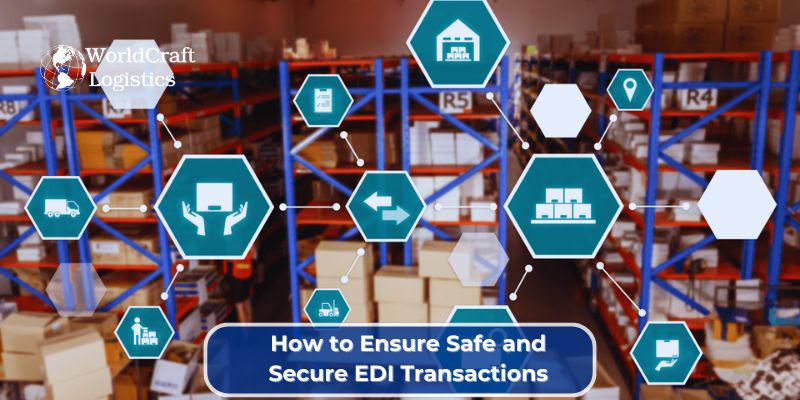
As mentioned earlier, security is a major concern when it comes to EDI. In order to ensure safe and secure transactions, businesses can take the following measures:
Partnering with a trusted and reputable EDI provider is crucial for ensuring the security of your transactions. Make sure to do thorough research and choose a provider that has a proven track record of keeping data safe.
Encrypting data is an important step in protecting sensitive information. This makes it harder for hackers to access and decode the data in case of a security breach.
It's important to regularly monitor and update your systems to identify any potential vulnerabilities and address them promptly. Outdated systems are more prone to cyber threats.
Educating employees on security protocols and best practices is crucial for preventing human errors that could lead to security breaches. Make sure all employees understand their roles and responsibilities in maintaining data security.
Here are some frequently asked questions about EDI shipping:
A: EDI stands for Electronic Data Interchange, which is the electronic exchange of business documents between trading partners in a standardized format.
A: Some of the key benefits of EDI in shipping include increased efficiency and speed, cost savings, improved accuracy and data quality, and real-time tracking and visibility.
A: Some important EDI documents in shipping include purchase orders, advance shipping notices, electronic invoices, and payment remittance advice.
A: EDI uses electronic data exchange, while traditional shipping methods rely on manual processes. This results in increased efficiency, cost savings, and improved accuracy in shipping.
A: Some challenges of implementing EDI in shipping include high initial investment, technology and system compatibility, training and expertise, and security concerns.
Worldcraft Logistics confirms that EDI has transformed the shipping industry, making it easier for businesses to exchange information and manage their supply chains. With its numerous benefits, including increased efficiency and speed, cost savings, and improved data quality, it's no wonder that more and more businesses are adopting this technology. However, it's important to address the challenges and complexities that come with implementing EDI and ensure safe and secure transactions. As technology continues to evolve, we can expect to see further advancements and innovations in EDI, making shipping processes even more efficient and streamlined.
SEO
Digital Marketing/SEO Specialist
Simon Mang is an SEO and Digital Marketing expert at Wordcraft Logistics. With many years of experience in the field of digital marketing, he has shaped and built strategies to effectively promote Wordcraft Logistics' online presence. With a deep understanding of the logistics industry, I have shared more than 500 specialized articles on many different topics.

Education
01/05/2025

Education
02/18/2025

Education
01/01/2024

Education
08/28/2024

Education
11/13/2023